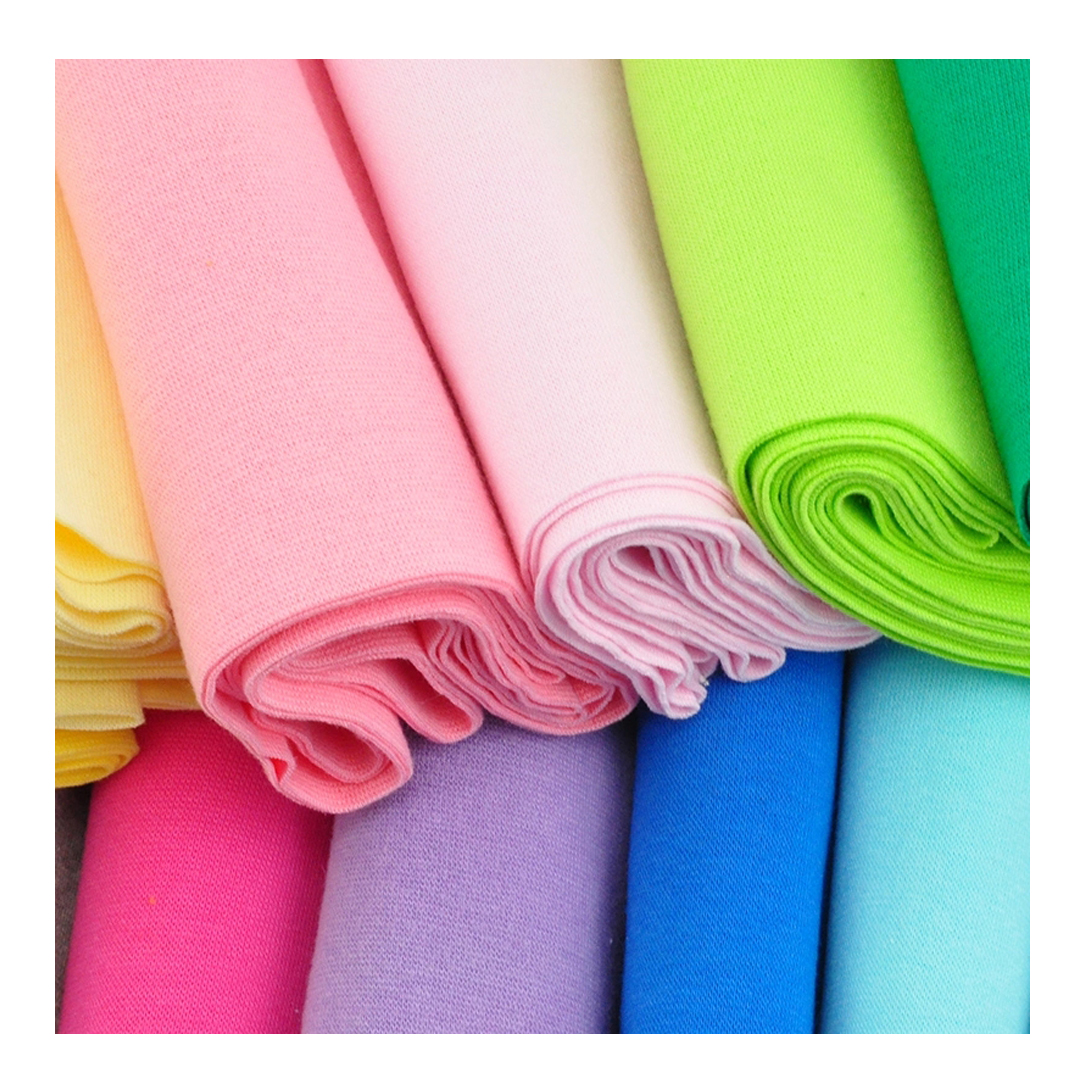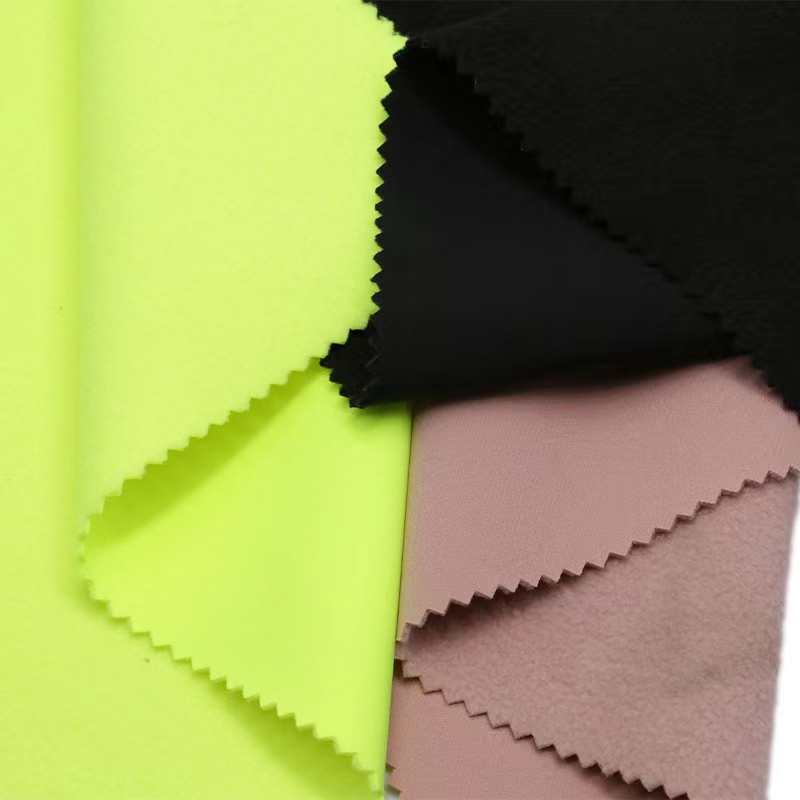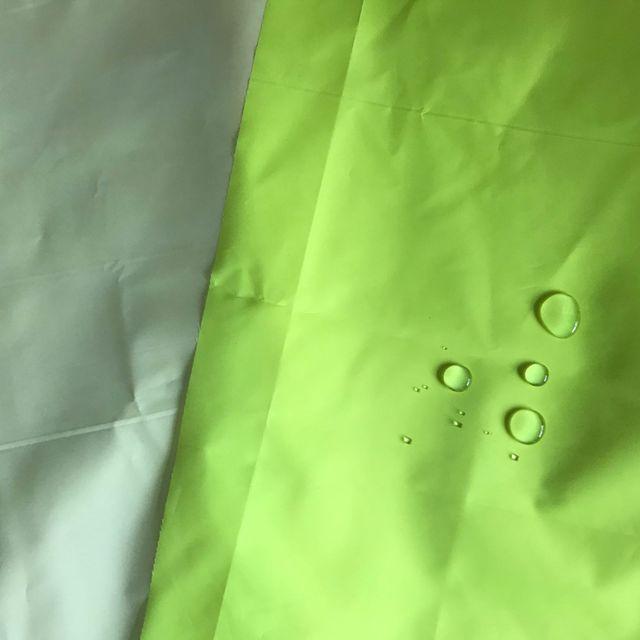How much do you know about aramid dyeing?
How much do you know about aramid dyeing?
How much do you know about aramid dyeing methods?
Since the glass transition temperature of aramid fiber is as high as 275°C, it is difficult to dye using conventional dyeing methods (130°C). In order to meet the goals of green dyeing and finishing, there is an urgent need to develop environmentally friendly dyeing technology for aramid fabrics. Adding environmentally friendly carriers to disperse dyes on aramid fabrics is a convenient, effective and safe dyeing technology. Therefore, studying the high-temperature and high-pressure disperse dye carrier dyeing process and mechanism of aramid fabrics not only has theoretical value, but also has more practical significance.

This paper takes meta or aramid fabrics as the main research object. Through single factor analysis and orthogonal experiments, it is determined that three dyes, dispersed brilliant red SF-B, dispersed yellow M-4GL and dispersed dark blue UN-SE, have high-temperature effects on aramid fabrics. The best process for high-pressure dyeing is: dyeing temperature 140°C, pH value 5.5, and liquor ratio 1:20. On the basis of this optimal process, the environmentally friendly carrier CINDYE was added, and the optimal process for high-temperature and high-pressure carrier dyeing of aramid fabrics was determined to be: carrier CINDYE concentration 30g/l, dyeing temperature 130°C. The results show that the high-temperature and high-pressure carrier dyeing method can significantly improve the dyeing performance of disperse dyes for aramid fabrics: the dye uptake rate of the dyed goods is >77%, the K/S value is >11; the color fastness to washing is ≥ level 2-3, and the color resistance to rubbing is Fastness and color fastness to light are ≥ level 3, and color fastness to hot pressing is ≥ level 4.
1.1.1 Aramid fiber and its dyeing technology
Aramid is a high-tech special fiber with excellent mechanical properties, stable chemical properties and ideal mechanical properties.
However, because the glass transition temperature (Tg) of aramid fiber is as high as 275°C, dyeing is difficult and the light fastness is poor. Therefore, domestic and foreign industry insiders have studied the dyeing technology of aramid fiber. Disperse dyes and cationic dyes are mainly used for dyeing.
(1) Disperse dye dyeing method
Ke Xiaochao and others used disperse dye high-temperature and high-pressure dyeing (130°C) with a dye dosage of 6% (o.w.f.) to dye aramid fabrics to a medium color, but the color fastness to washing and rubbing fastness of aramid fabrics after dyeing were not enough. ideal. Zhu Lifeng et al. used disperse red 3BFFR to dye aramid fibers under ultra-high temperature and high pressure (170°C) conditions. The dye concentration was 3% (o.w.f.) and the pH value was about 5.5. In addition, in order to avoid the influence of additives at high temperatures, the dye solution No additives are added. It was found that the K/S value of yarn dyed with disperse red BFFR was 2.3. However, because the temperature is too high, it not only requires high equipment, but also consumes a lot of energy. Hamid M.Ghorashi of the United States and others use non-water-soluble dyes to dye aramid, such as using a dye solution containing 25g/LC.I. Disperse Yellow 42 and 6g/L guar gum thickener to pad-dye aramid. The padding rate was 50%, and then steamed in a saturated steam box at 165°C for 15 minutes. The results showed that the dye had a high exhaustion rate on the fiber and the fiber obtained a darker color [11]. Shigenobu Kobayashi of Japan and others found that disperse dyes with a dye molecular weight of 330-400 were dissolved or dispersed in a liquid medium (such as water) and dyed aramid fabrics in a closed container at 150°C for 1 hour to obtain a higher surface depth and better Washing fastness and sun fastness. For example, disperse blue 2BLN (2% (o.w.f.)) that meets the molecular weight requirements has a K/S value of 4.6 when dyed at 170°C for 60 minutes and 5.7 at 190°C; disperse red 3B dyed at 170°C for 60 minutes has a K/S value of 3.0 , 4.3 at 190℃.

(2)Cationic dye dyeing method
The dye concentration is 2% (o.w.f.). It is found that after adding electrolyte, the cationic dye can be dyed. Although the color may fade during washing and soaping, the dyeing result is acceptable. However, due to the high glass transition temperature and crystallinity of aramid, it is difficult to dye it using conventional methods [13]. Zhu Lifeng et al. used cationic red FG (dye concentration 3% (o.w.f.)) to dye aramid at high temperature and high pressure (170°C) without adding additives to the dyeing solution. The K/S value of the dyed fabric was 1.96[10]. Yu Yan’e and others used Mesilon red dye (concentration 6% (o.w.f.)) to dye aramid at 120°C, and the K/S value was only 2.33 [14].
According to the literature reviewed, without adding additives to the dye liquor, the surface depth and color fastness of aramid fabrics dyed with disperse dyes are better than those dyed with cationic dyes, and disperse dyes are cheaper. From the perspective of energy saving and environmental protection, it is more reasonable to use disperse dyes to dye aramid fabrics.
1.1.2 Carrier characteristics and its application in aramid fiber dyeing
Waters first used the term “carrier” in 1950 to define a compound that promotes dye uptake in the polyester dyeing process. It has affinity for both dyes and fibers and can puff the fibers. When it enters the interior of the fiber, it also It can bring in dye molecules. Therefore, the carrier is also called a dye-carrying agent, a dye-conducting agent or a carrier. In fact, it is a fiber bulking agent.
Carriers are divided into emulsified carriers, dispersion carriers and water-soluble carriers according to their solubility and state of use.
(1) Emulsified carrier
Methyl glycolate, chlorobenzene, and methylnaphthalene all belong to this type of carrier, and emulsifiers need to be added when using them to emulsify them into emulsions. This type of carrier has many types and is easy to use, but the emulsion must be kept stable during use, otherwise it is easy to form carrier spots and cause dyeing defects. In addition, this kind of carrier is easy to volatilize due to heating, so that the carrier is separated from the emulsifier and water suspension system, and the concentration is reduced. Moreover, if the volatilized carrier returns to the dye bath again, it is easy to form dye spots. Therefore, emulsifiers need to be selected carefully.The influence of polyester fiber dyeing properties.
(2) Use modern analytical testing methods to study the impact of carriers on the color, solubility, particle size, dispersion state and dispersion stability of disperse dyes.

(3) Use modern analytical testing methods to study the impact of carriers on the thermal properties, crystalline morphology, chemical structure, surface morphology, flame retardancy, mechanical properties, diameter, cross-sectional area and porosity of aramid fibers.
(4) Select one of the disperse dyes – Disperse Yellow S-4G, purify the dye and conduct relevant tests and analyses. Study the effect of carrier on the dyeing rate constant, half-dyeing time and diffusion coefficient of aramid fiber disperse dye dyeing, and analyze the effect of carrier on the dyeing kinetics of aramid fiber disperse dye.
(5) Taking dispersed Y as an example, study the adsorption isotherm and dyeing affinity of the carrier for aramid fiber disperse dye dyeing
The influence of dyeing thermodynamic parameters such as dyeing enthalpy and dyeing entropy was analyzed, and the effect of carrier on the dyeing thermodynamics of aramid fiber disperse dyes was analyzed. On the basis of the above research, the mechanism of carrier dyeing of aramid fiber disperse dyes is discussed, which lays a reliable foundation for establishing the theory of carrier dyeing aramid fiber disperse dyes.
1.4 Innovation points
The innovation lies in studying the effect of carrier X on the color, particle size, dispersion state and dispersion stability of disperse dyes; studying the effect of carrier Effect of disperse dye dyeing kinetics on aramid fibers.
2. Research on high temperature and high pressure carrier dyeing process of disperse dyes for aramid fabrics
This chapter takes meta-aramid fabric as the main research object and dyes it with disperse dyes. It focuses on the influence of single factors of high-temperature and high-pressure dyeing process on the dyeing properties of aramid fabrics, and determines the high-temperature and high-pressure properties of aramid fabric disperse dyes through orthogonal experiments. The best process for dyeing; on this basis, add carriers, and determine the best process for high-temperature and high-pressure carrier dyeing of disperse dyes through analysis of carrier types and concentration factors. By testing the color fastness to washing, color fastness to rubbing, color fastness to light and other indicators of dyed fabrics, the influence of the carrier on the quality of disperse dye dyeings is determined.
2.1 Experimental part
2.1.1 Experimental materials, drugs and instruments
Experimental material: 1.67dtex×38mm (40S/2) meta-aramid fabric (Shandong Yantai Spandex Co., Ltd.);
Experimental drugs: Dispersed brilliant red SF-B (200%), dispersed yellow S-4G (200%), dispersed dark blue UN-SE (200%) (Zhejiang Longsheng), NaNO3 (AR), dispersing agent CNF (industrial product ), pH buffer ((NH4)2SO4-CH3COOH, Na2CO3-NaHCO3), Ulihuadin DPL, Ulihuadin PB (Huntsman), HS-312N (Zhejiang Huasheng Chemical Products Co., Ltd.), Cindye Dnk (Ningbo Busaite);
The structure of disperse dyes is as follows:
Scattered yellow
Disperse blue: a color-matching dye;
YG(B)605 Ironing Sublimation Color Fastness Tester Wenzhou Darong Textile Standard Instrument Factory
2.1.2 Experiments and test methods
2.1.2.1 Dyeing technology and process
(1) Dyeing process prescription
Diffusion agent CNF/g/L 5
Disperse dye/%(o.w.f.)
pH value (adjusted with pH buffer) 4.0, 4.5, 5.0, 5.5, 6.0
Temperature /℃
Time/min
Liquor ratio 1:10, 1:20, 1:30, 1:40, 1:50
(2)Dyeing process
2.1 Aramid fabric dyeing process
2.1.2.2 Orthogonal test
The fixed dye dosage is 2% (o.w.f.) and the dyeing time is 60 minutes, based on the dyeing temperature (130℃, 135℃, 140℃), pH value (4.5, 5.0, 5.5) and liquor ratio (1:15, 1:20, 1: 25) Conduct a three-factor, three-level orthogonal experiment. See the orthogonal experiment design
Table 2.1:
Table 2.1 Orthogonal experimental design table
2.1.2.3 Test method
(1) Dye uptake percentage: Tested with a UV-visible spectrophotometer. The absorbance of the dye solution at the maximum absorption wavelength before and after dyeing are A0 and A respectively. Calculate with the following formula: Dye uptake rate/%=(A0-A)/A0 ×100%[27]
(2) K/S value and color difference △E: measured with Datacolor SF600 color measurement and matching instrument.
(3) Color fastness to light: Measured with reference to GB/T 8427-1998 “Textiles Color Fastness Test Color Fastness to Artificial Weather: Xenon Arc”.
(4) Color fastness to washing: Measured with reference to GB/T3921.1-1997 “Textiles Color Fastness Test – Color Fastness to Washing”.
(5) Color fastness to rubbing: Measured with reference to GB/T 3920-1997 “Color Fastness to Rubbing Test for Color Fastness of Textiles”.
(6) Color fastness to hot pressing: Measured with reference to GB/T6152-1997 “Textiles Color Fastness Test – Color Fastness to Hot Pressing”.
2.2 Results and Discussion
2.2.1 High temperature and high pressure dyeing
2.2.1.1Single factor analysis
The high-temperature and high-pressure dyeing process of disperse dyes for aramid fabrics was analyzed using dyeing temperature, dyeing holding time, dye liquor pH value and dye liquor liquor ratio as single factors.
1Dyeing temperature
Three disperse dyes, Disperse Brilliant Red SF-B, Disperse Yellow S-4G and Disperse Deep Blue UN-SE (2% (o.w.f.)), were used. The pH value was 4.5 and the liquor ratio was 1:30. They were used at 120, 125, 130 and Aramid fabrics are dyed and held at 135 and 140℃ for 60 minutes. The relationship between dyeing temperature and the dye uptake rate of disperse dyes on aramid fabrics is shown in
High temperature and high pressure dyeing process with disperse dyes.
1Dyeing temperature
Three disperse dyes, Disperse Brilliant Red SF-B, Disperse Yellow S-4G and Disperse Deep Blue UN-SE (2% (o.w.f.)), were used. The pH value was 4.5 and the liquor ratio was 1:30. They were used at 120, 125, 130 and Aramid fabrics are dyed and held at 135 and 140℃ for 60 minutes. The relationship between dyeing temperature and the dye uptake rate of disperse dyes on aramid fabrics is shown in






